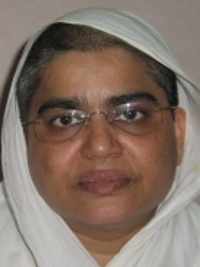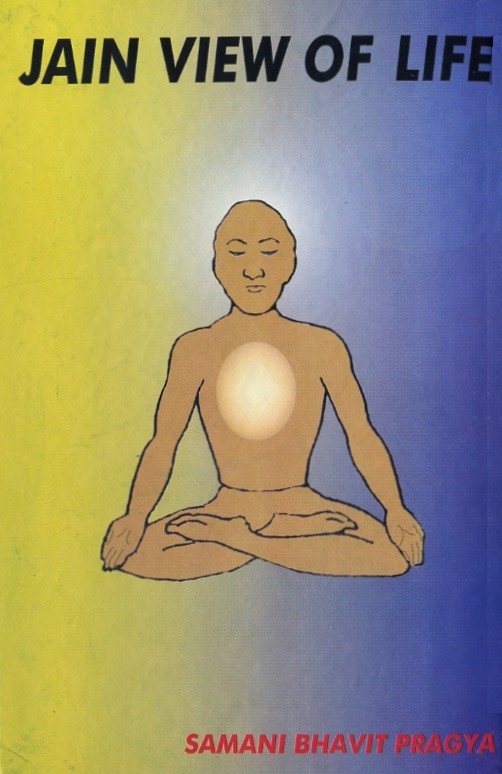Application of Deep Breathing in Daily Life
We are now living in the age of science and technology, and, as a result of the many changes this has brought about, mankind has been hurled from the primitive age into the atomic age in a relatively short period of time. While the avenues to comfort and enjoyment have increased manifold, so have the sources of stress and tension. In spite of all this material well being, mankind has not found peace of mind and, to relieve the tensions of modern living, indulges in many kinds of damaging behaviours and resorts to various kinds of mind altering drugs. But all this is of no avail. None of these actions provide any relief, and as the tension mounts, such people are in an extremely dangerous situation as they are driven to behave in ways that are even more damaging and inappropriate. However, there is a simple and effective means of achieving the peace of mind so eagerly sought by all that has been available for thousands of years.
Panacea for Stress
In such a situation, a person can achieve complete peace of mind by meditating half an hour every day; this will definitely lead to a peaceful state of mind. There are various methods and techniques of meditation such as transcendental meditation, vipashyana meditation, etc., but the one I will deal with is Preksha Meditation. Pre means profoundly, iksha means to see one's self. Preksha means to see one's self profoundly.
Preksha Meditation is a comprehensive course consisting of many techniques such as perception or awareness of the breathing; perception or awareness of the body; psychic centers of the body; psychic colours; contemplation of tolerance; fearlessness; amity; and several others. The ability to reach deep levels of meditation requires much effort and practice in order for a person to become fully proficient.
The First Door to Meditation
For beginners, the methods of breathing are very important. Breath is the first door through which we can perceive the soul, and by passing through this door, the journey towards the self begins. When the mind begins to follow the in-going breath, we begin to enter into our being. Breathing is a tool which can be used to explore the truth about one's self. It acts as a bridge from the known to the unknown.
Breathing is the only function of the body that can be controlled voluntarily as well as involuntarily. It goes on and on whether we are aware of it or not. Breathing is a pure and uncontaminated event, i.e., bereft of the pollution of like and dislike. It is a real event of the present devoid of past memory and imagination of the future.
Very slow, deep and rhythmic breathing is essential for relaxation and peace of mind, and thus contributes to health, a peaceful and tranquil life.
The Essentiality of Breath
We can live for several months without food, for several days without water, but we can live for only a few moments without breathing. Breathing is part and parcel of our life To live a good, long, and balanced life, it is necessary to breathe slowly and gently. It is said in Samavayo scripture that the life span of some gods and oddesses is one sagar (a very long period), and they breathe only once in fifteen days. Other gods and goddesses whose life span is of two sagars, breathe only once in a month. There is a scientific relationship between breathing rate and life span as shown below:
Animal Breaths/Minute Life Span Rabit
38
8
Monkey
31-32
13-15
Dog
28-30
20-21
Horse
20-22
48-50
Human Being
15-17
70-100
Elephant
11-12
100-120
Snake
7-8
120-122
Turtle
4-5
160-165
Proper Breathing
To breathe properly, let the abdominal wall move slightly out as you inhale, and let it go back in while exhaling. Always inhale through the nostrils so that the nose, with the help of hairs called cilia trap the large particles of dust. Smaller particles and bacteria are trapped by the mucus membranes. Have the feeling with every inhalation that you are drawing in cosmic energy, peace vibrations, and a large amount of oxygen, and with every exhalation you are throwing out impurities, tensions, and gasses that are not required. You may feel the temperature °f the breath becoming slightly cooler as it enters and slightly warmer as it leaves. During this practice, do not allow any external thoughts to come to mind. If you want to see an example of proper breathing, observe the way a child breathes when asleep. With every inhalation and exhalation, the abdominal wall expands and contracts respectively. Violent impulses and the emotions of loneliness and depression have no effect on a person who is breathing properly.
Our lung's capacity is approximately six liters but we normally breathe in only about one half a liter of air with every breath. This ratio can be modified with practice. Scientific deep breathing starts with a slow, calm and complete exhalation, and contraction of the abdominal muscles help to evacuate the lungs by raising the diaphragm. The normal rate of breathing is from fifteen to seventeen breaths per minute, but under severe stress, it increases up to thirty, forty, or fifty breaths per minute. With continued practice, we can decrease this rate to three to five breaths per minute. The following table shows the effects that various activities have diffrent breathing rate.
Activities
Breathing Rate
Sexual excitement and act
60-70
Emotion such as anger and fear
40-60
Sleep
25-30
Speech
20-25
Walking
18-20
Resting
15-17
Normal deep breathing
8-10
Deep breathing after practice
4-6
After long and regular practice
1-3
Benefits of Deep Breathing
The practice of complete breathing using the muscles of the collar bone, the intestine, and the diaphragm makes a person immune to many diseases, especially bronchial diseases and general weaknesses. The oxygen rich blood nourishes the entire system. Deep breathing helps in resisting the germs that invade the lung's tissues and make the lungs remain active. When there is plenty of oxygen, it is absorbed by the food before digestion and assimilation. There is a reduction of vigour as well as impairment of the digestive and nervous systems in the absence of proper breathing. Along with this, the minute nerves become ineffective in transmitting nerve impulses. Proper breathing ensures complete nourishment of the brain, spinal cord, nerves, and muscles.
Relationship Between the Mind and the Breath
One of the main problems of our time is that people do not know how to breathe properly. When a person becomes angry, depressed, or upset, the breathing becomes irregular and unsteady because the state of mind is closely connected with breathing. When the mind is in a state of confusion and turmoil, a person's job performance and problem solving ability suffers, the mind and its modifications moves in a disorderly fashion in all directions, and performance drops to zero. The breathing in this case will be short, shallow, and uneven. To cure this situation, a person has to practice slow, deep, and rhythmic breathing. The forces of the mind will then move in one direction and energy will be channeled constructively. In such a way we can see how closely the mind and breath are linked and with what results. If people are not trained to breathe properly and rhythmically, their maximum potential can never be reached.
Regularity in Practice
A person should make a firm resolution to be very regular in the practice of slow, deep, and rhythmic breathing. Just as Muslims are punctual in their prayer habits, so should a person observe a regular schedule of proper breathing. Wherever Muslims may be, everything stops when the time for prayer comes. Then, spreading a bed sheet, even by the roadside if necessary, the Muslim prays for at least fifteen minutes, Similarly, you must have a fixed time of at least fifteen minutes for the practice of deep breathing.
Preferred Time for Deep Breathing Practice
Practice may be performed in the early morning, at noon, in the early evening, or at midnight. At these times, nature seems to stand still. Even birds are silent and hide themselves among the leaves of the trees; there is a definite lull. The great spiritual saints Ganadhipati Gurudeva Shri Tulsi used to meditate in the early morning and at midnight. In their view, morning meditation has a definite advantage over noon and evening meditation. When a person awakens from a night's rest, all the impressions of the preceding day are erased. There is also a special kind of secretion called Amrit Srava (nectar secretion) that gives a spiritual impetus and direction to the mind. Moreover, nature is quiet in the early morning instead of being fully awake and stirring. Along with regular hours of meditation, you should have a fixed place in which to meditate. This place will become charged with energy. Spiritual centers or isolated open spaces, rich in oxygen, are used for meditation. However, despite the importance of a proper time and place for meditation, the practice of deep and rhythmic breathing can be performed at any time that the air is free from pollution and impurities.
Conclusion
Proper breathing is a must for the development of an integrated personality. Proper breathing is itself a technique for purifying the mind, evening out the life, and awakening the faculty of spiritual power. If one continues practicing, all the problems of stress, depression and irritation gradually diminish. Tomorrow will be a little easier, the next day more so, and little by little, all the problems will pass away. There is a saying:
Long breath, big mind
Long breath, long life
Small breath, small mind
Small breath, small life.
 Samani Bhavit Pragya
Samani Bhavit Pragya
